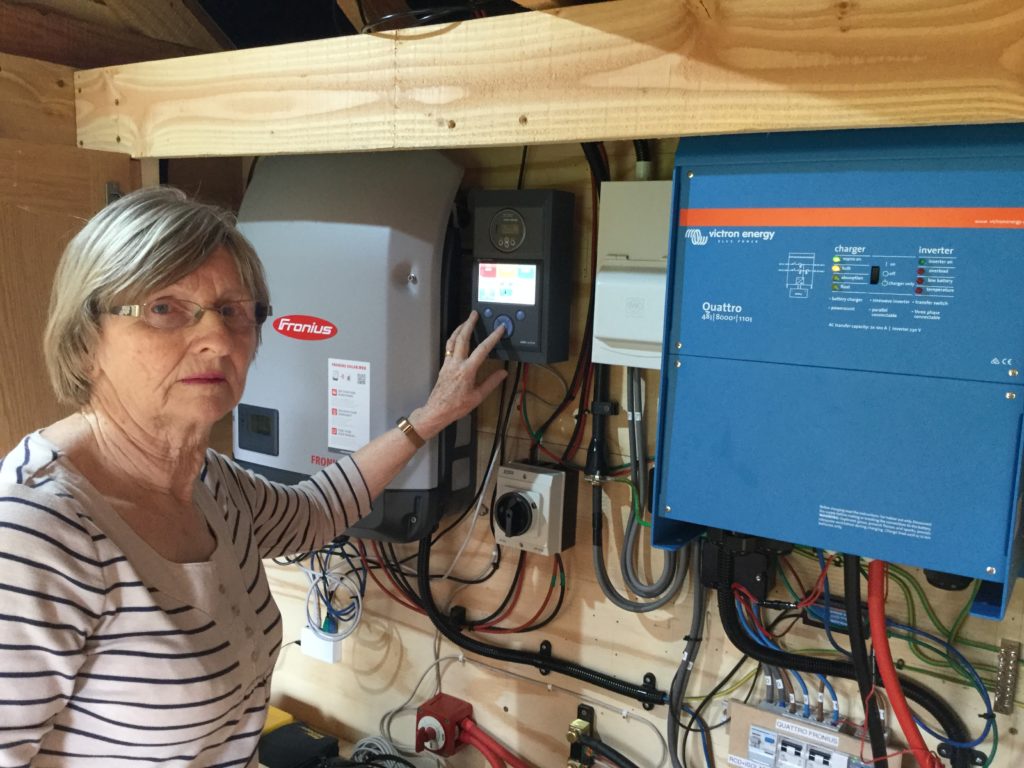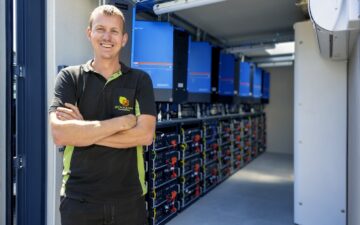
John Smith wanted to charge his Electric Vehicle with solar power …off-grid energy for his house …a worry-free Energy Storage System (ESS) for his holiday-let property …And he wanted to install everything himself – for which he became a qualified Electrician. This is his story:
It was when he retired that John’s work really began. He took on the renovation of an 18th Century, six-bedroomed farmhouse on the North York moors. Believing it would take five to ten years (it took longer) he and his wife, Penny, had the idea of converting it into a house for themselves, and a holiday-let-next-door.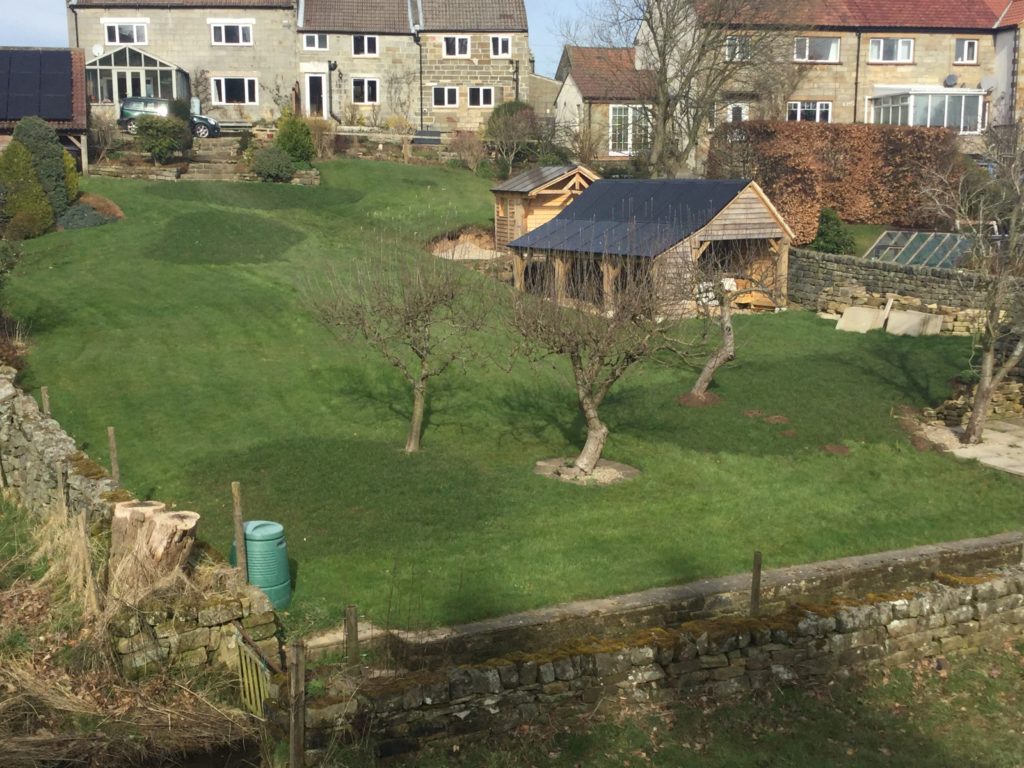
When the properties were almost complete they became interested in solar energy – and when John saw his US-based son’s Tesla, his dream of power self-sufficiency blossomed.
Beginning with a small PV system the idea was to expand as their experience and knowledge developed – with the ultimate goal of buying an EV and powering it from their own solar harvest.
A meeting with Dr. Mohamed Mahmoud of MeadoTech – system designers and suppliers of renewable energy solutions – was pivotal for John who describes Mohamed as his friend and mentor. Recounting the story he says: I cannot go past this point without stating how none of what we have achieved could have happened without the help and assistance of Mohamed. His endless patience in explaining options and limitations was amazing.
Off Grid
The first system they installed is off-grid and comprises
- Easysolar 48V 5kVA, which combines a solar charger, Inverter Charger, and AC distribution panel.
- Storage is by 16 Rolls S605 6V 468Ah Lead Acid batteries wired in two parallel banks of 8, in series
- 15 Sharp NU-RD300 Black Solar panels wired in five parallel strings of 3 in series (4.5kWp)
Born 1942 John was apprenticed in the steel and chemical industry and, with night school gained a qualification in Mechanical Engineering. Most of his career he served as a Railway engineer and later, Production Services Manager for Corus (formerly British Steel). He’s also passionate about working with wood.
The purpose built timber-framed outbuilding whose roof supports the panels were built by John using mortice-and-tenon joints secured with oak pegs. This building is an open garage/workshop and houses the Electric Vehicle charging facility.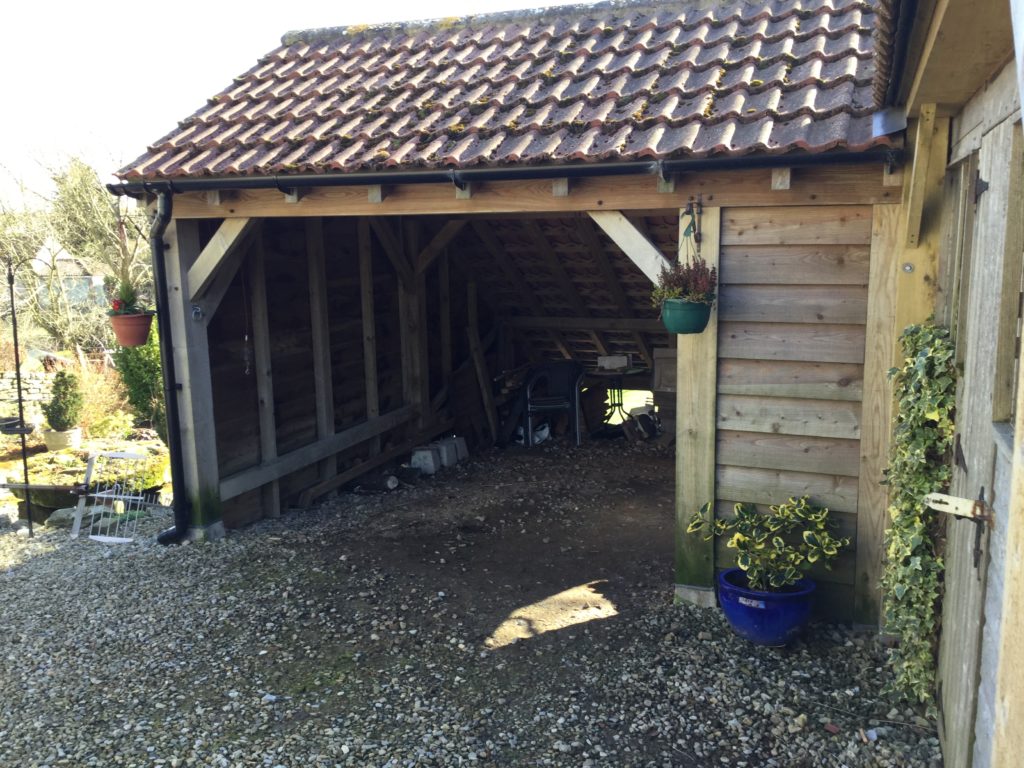
John says:
System 1 gave us everything we wanted. It powered the EV throughout the year and all major appliances in our main house during the summer. The Kitchen has a dedicated Consumer Unit and change-over switch. The limitations to the installation were a voltage-drop in the lead-acid battery bank when a sustained heavy load was applied; and the inverter output could not cope with the EV ‘fast-charger’ mode (drawing 8kW) – nor with multiple kitchen-appliance loads.
It’s worth noting here that home-installed Electric Vehicle chargers will typically provide 15 miles of range per-hour-of-charge at their standard charge rate (circa 3kW); and 30 miles of range per-hour-of-charge at their fast-charge rate (circa 7kW).
As the house was split into two John and Penny decided to install a second solar system:
Grid-tied Energy Storage System (ESS)
Grid-connected Energy Saving Systems prioritise self-consumption of harvested energy, only reluctantly selling or buying power from the grid. John’s system comprises:
- Quattro 48V / 8000VA
- A Fronius Primo 5KW Solar inverter
- 8 x Victron LiFe PO4 12.8V 160 Ah Batteries wired in two parallel banks of 4 in series
- 16 x Sharp NU-RD300 Black Solar panels wired in two parallel strings of 8 in series (4.8kWp)
The panels are mounted on two asymmetric-roofed outbuildings which have the unique feature that the solar panels actually form the roof-covering on the sun-facing pitch. This feature avoids the environmental impact of installing a conventional roof only to cover it with solar panels …and it also looks better.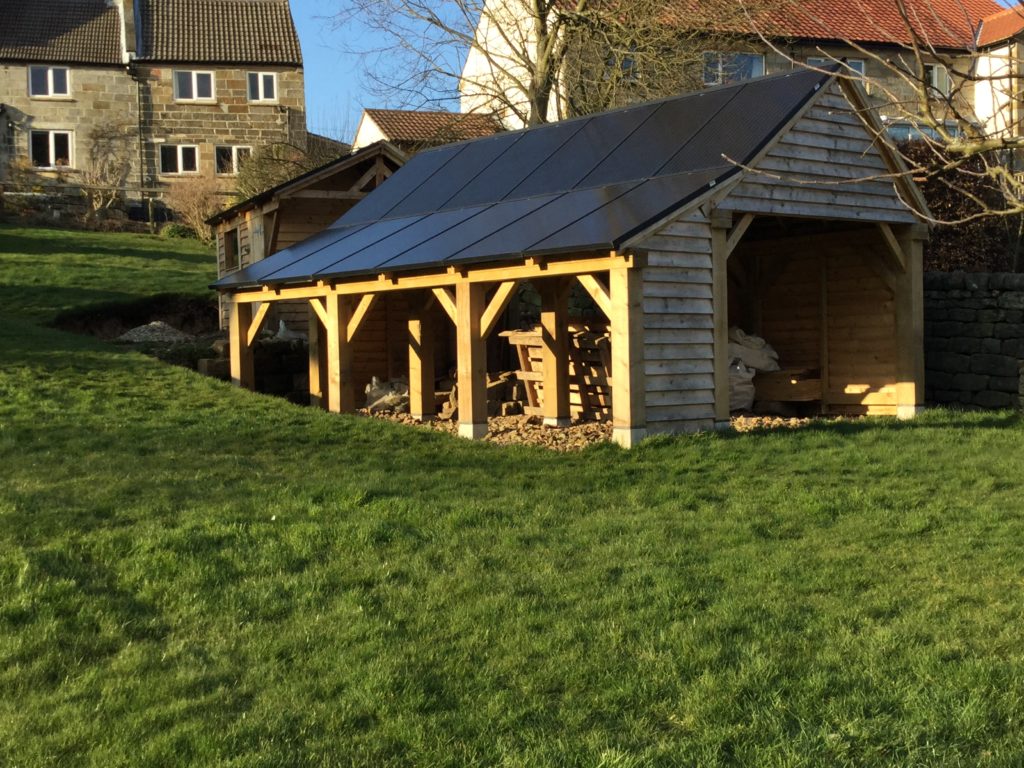
Breaking away from John’s story for a moment we got in touch with Dr. Mohamed Mahmoud to ask for his thoughts on John’s project
He told us:
“In the early 80’s I had some scientific thoughts about electronic ‘Green Parasite’ feeds from natural resources such as Solar/Wind/Hydro/Bio Fuel/Thermal etc., to produce energy for living, whereby if no resources are available it goes into sleep mode. Back then, only basic renewable energy components and microcontrollers were available.
“John’s site is a perfect template for a modern ‘Green Parasite’ for self-consumption. A Victron ESS is a smart flexible system – easy to deal with, programmable, and expandable; all options are available to achieve what you planned.
“Three strong features in a Victron ESS system makes it superior to other systems in my opinion, compared to Tesla PowerWall and others…
- first the DC-Link where multiple MPPT Charge Controllers can be integrated in the system connects direct to the battery, especially the VE.CAN MPPT models that could be daisy-chained and synchronized, so in John’s project this would provide future expansion to his system by adding wind turbines and hydro turbines using the DC-Link feature. I estimate his water stream could generate about 1kW of continuous power, maybe John could charge all of his neighbours EV’s as well! .
- second, though Victron ESS supports many 3rd party lithium batteries, both the ‘Sustain Voltage’ and ‘Cut-Off Voltage’ settings in the ESS Assistant are strong in-depth features which adapt to any type of LiFePO4 battery to control depth of discharge.
- third, the Zero Feed-in function using a Fronius PV Inverter makes its automatic control much easier and more accurate …which leads to much greater grid stability.”
John says that both systems have exceeded his expectations: We now have the best of both worlds with ESS and Off Grid which supplies 95% solar energy for our domestic consumption and EV charging with scope to further utilise solar energy if we can devise more innovative solutions.
He says that in spite of the steep learning curve related to how these systems work, he now plans to investigate potential for Hydro generation from small stream in his garden; investigate the potential for small scale wind generator; develop a solar powered night storage heater – day charge/night release; investigate possibilities for Air Source Heat Pump powered from solar to replace oil fired heating; convert his oil fired AGA/Rayburn cooker to electric; convert/replace petrol ride on lawn mower to battery electric; and develop his ideas on the use of hydrogen as an energy storage source.
Is sustainability catching?
